The magnetic field in the cylinderical region shown in figure increases at a constant rate of 10.0mT/s Each side of the square loop abcd and defa has a length of 2.00 cm and resistance of 2.00Ω. Correctly match the current in the wire 'ad' in four different situations as listed in column-I with the values given in column-II
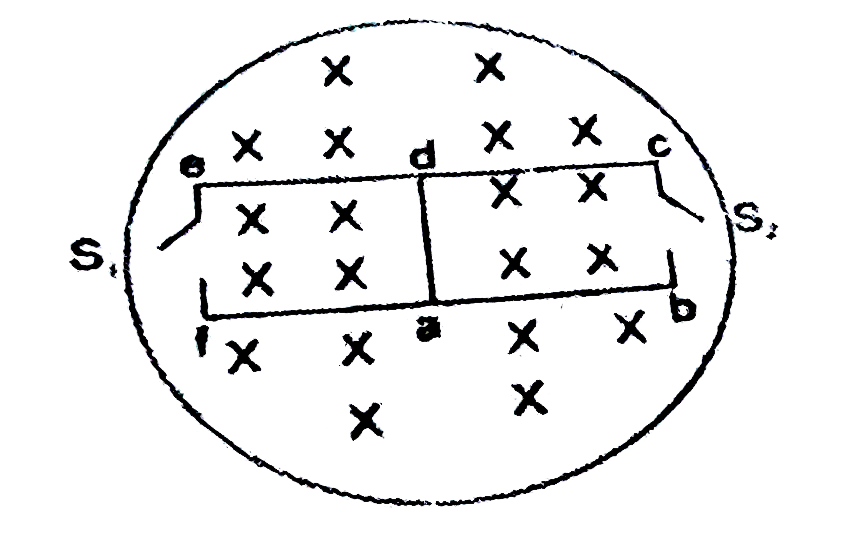

The correct Answer is:A, B, C, D
Step by step video & image solution for The magnetic field in the cylinderical region shown in figure increases at a constant rate of 10.0mT/s Each side of the square loop abcd and defa has a length of 2.00 cm and resistance of 2.00 Omega. Correctly match the current in the wire 'ad' in four different situations as listed in column-I with the values given in column-II by Physics experts to help you in doubts & scoring excellent marks in Class 12 exams.
Updated on:21/07/2023Similar Questions
The magnetic field in the cylindrical region shown in figure increase at a constant rate of 20mT/sec. Each side of the square loop ABCD has a length of 1cm and resistance of 4Ω. Find the current in the wire AB if the switch S is closed
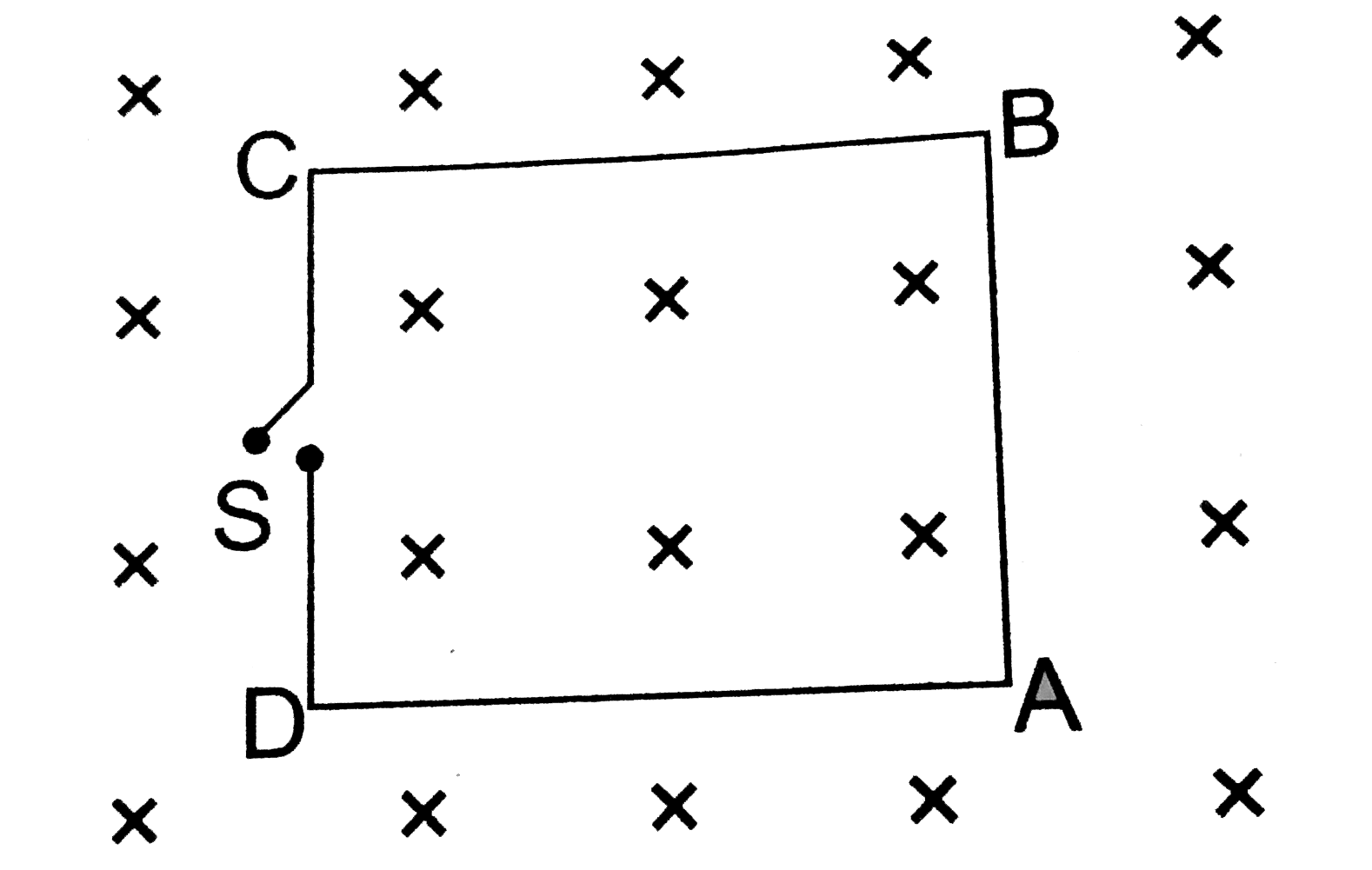
View SolutionThe magnetic field in the cylindrical region shown in increases at a constant rate of 20.0 mT/s. Each side of the square loop abcd and defa has a length of 1.00 cm and a resistance of 4.00Ω. Find the current (magnitude and sense) in the wire ad if (a) the switch S1 is closed but S2 is open, (b) S1 is open but S2 is closed, (c) both S1 and S2 are open and (d) both S1 and S2 are closed.
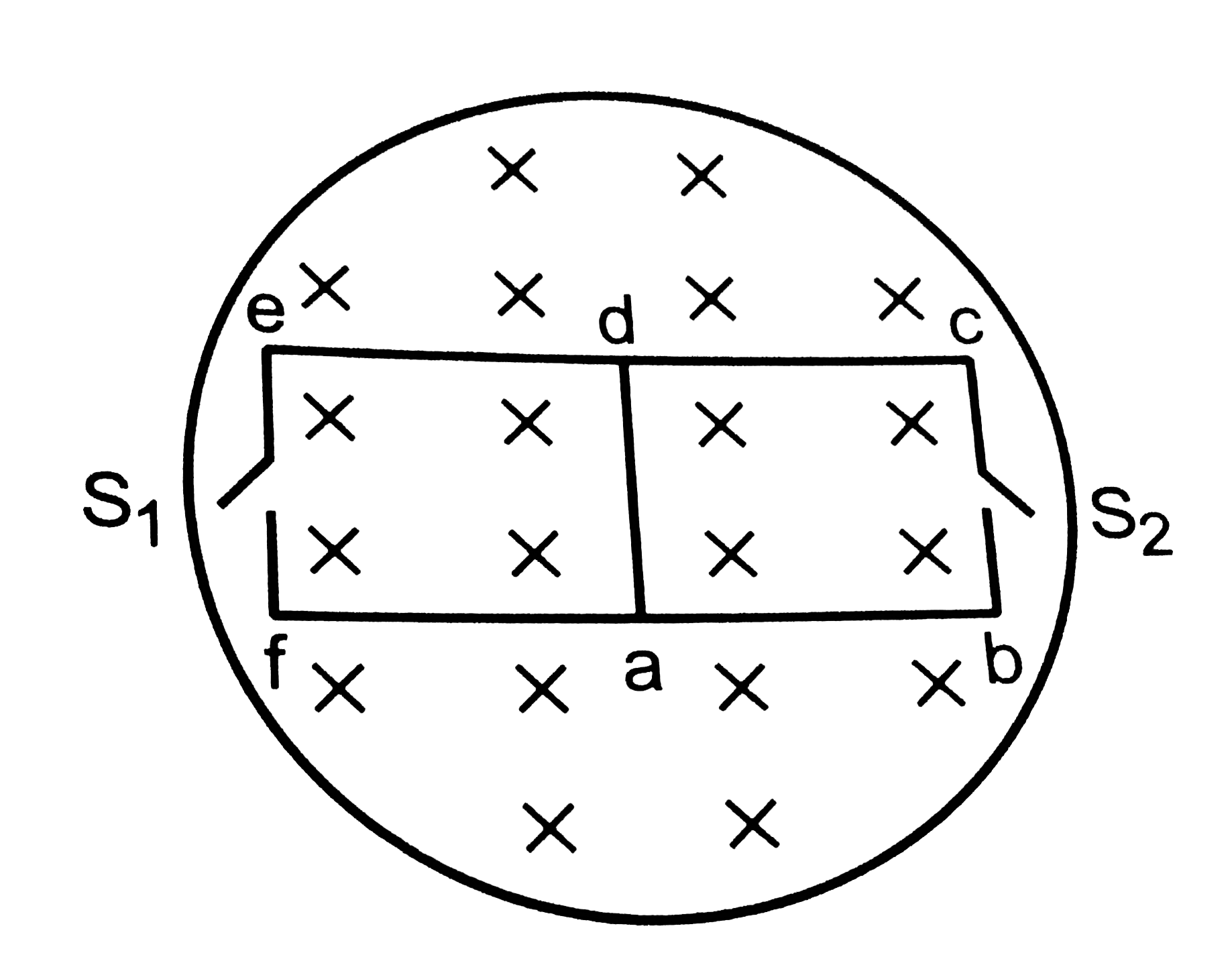
View SolutionShows a square loop having 100 turns, an area of 2.5X10−3m2 and a resistance of 100Ω. The magnetic field has a magnitude B =0.40 T. Find the work done in pulling the loop out of the field, slowly and uniformly is 1.0 s.
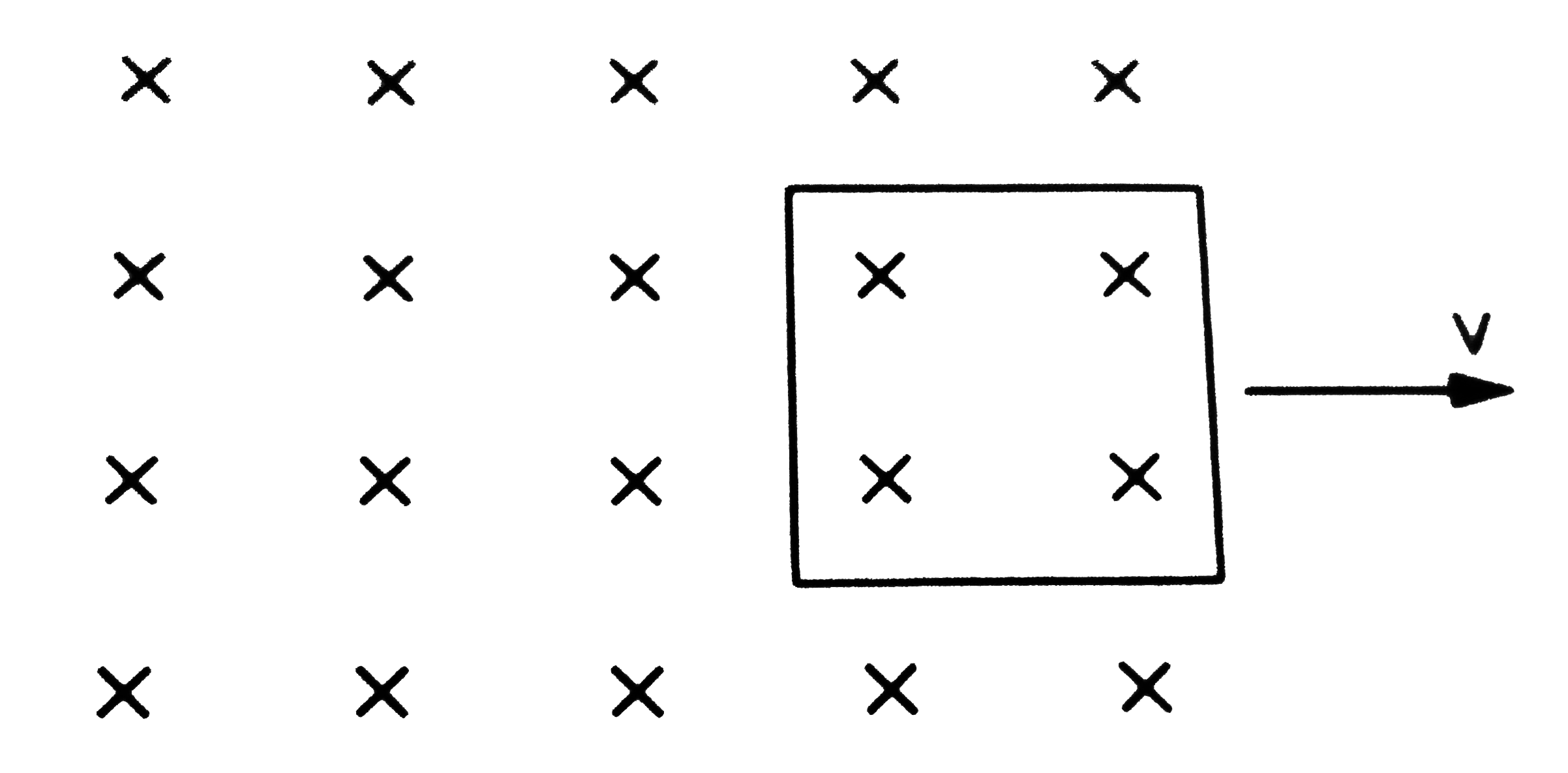
View SolutionA unifrom magnetic field B exists in a cylindrical region of radius 10 cm as shown in. A uniform wire of length 80 cm and resistance 4.0 Omega is bent into a square frame and is placed with one side along a diameter of the cylindrical region. If the magnetic field increases at a constant rate of 0.010 T/s, find the current induced in the frame.
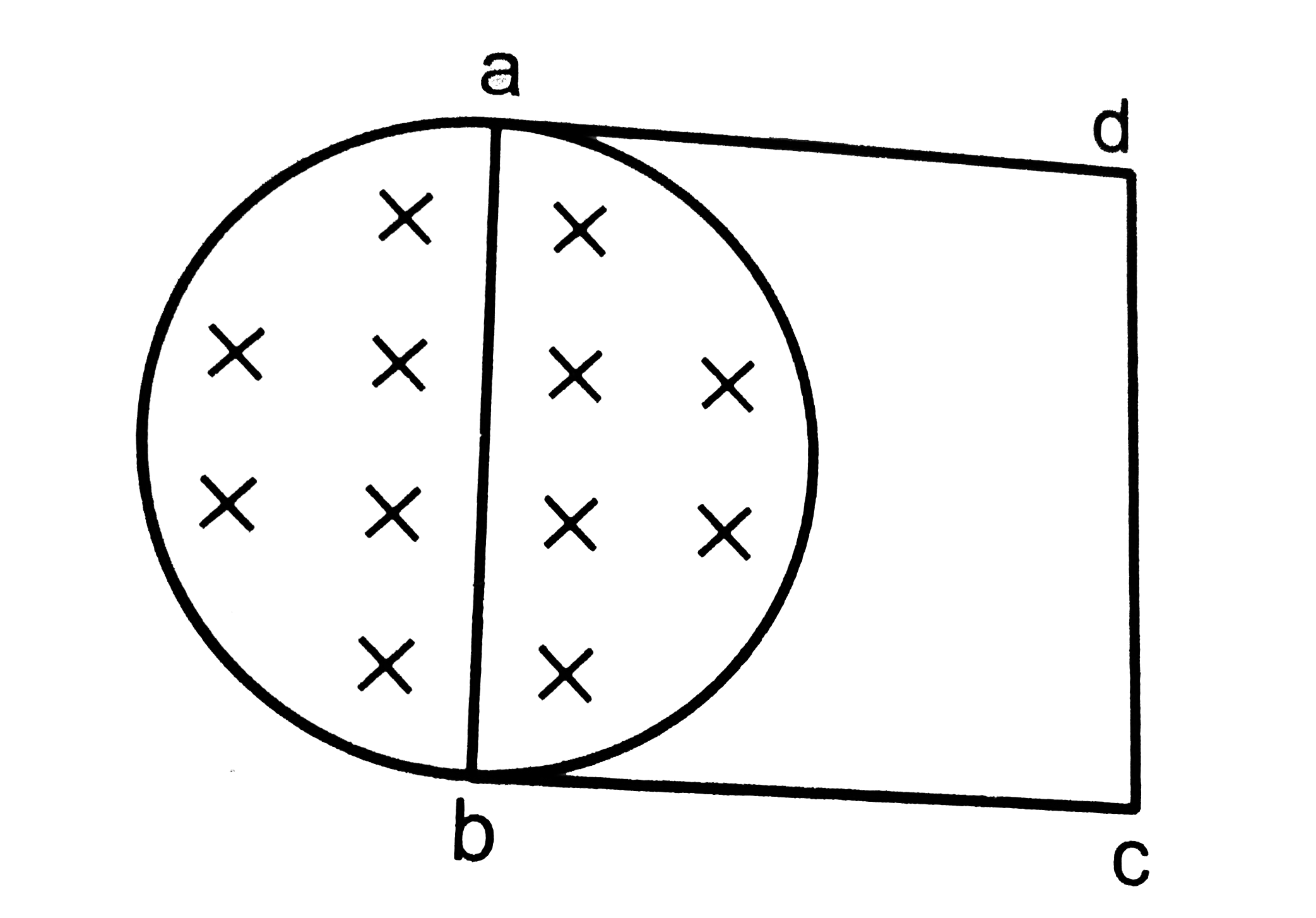
View SolutionA unifrom magnetic field B exists in a cylindrical region of radius 1 cm as shown in figure. A uniform wire of length 16 cm and resistance 4.0Ω is bent into a square frame and is placed with one side along a diameters of the cylindrical region. If the magnetic field increaes at a constant rate of 1 T/s find the current induced in the frame.
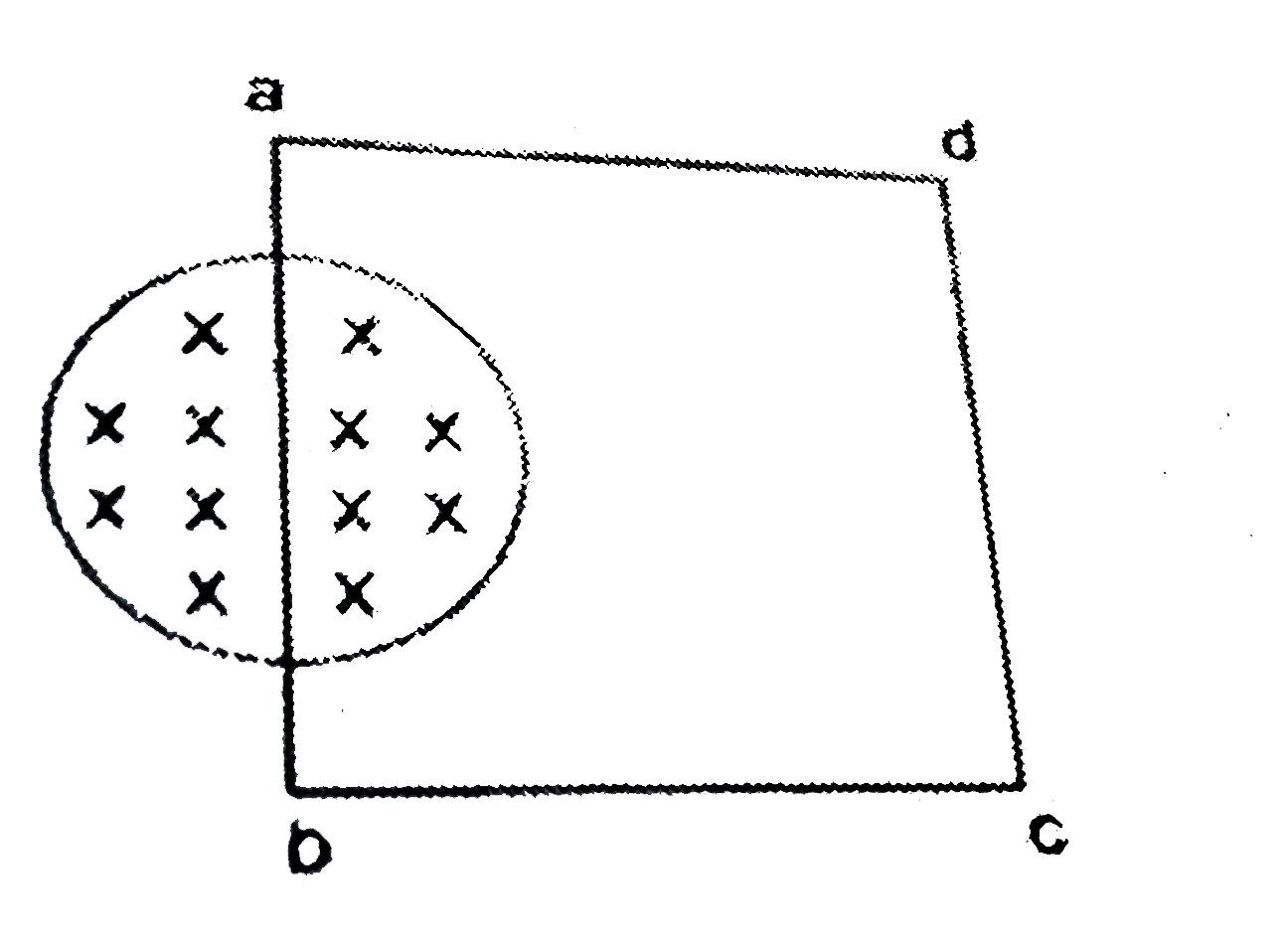
View SolutionFigure show a square loop of side 0.5m and resistance 10Ω. The magnetic field has a magnitude B=1.0T. The work done in pulling the loop out of the field slowly and uniformly in 2.0s is
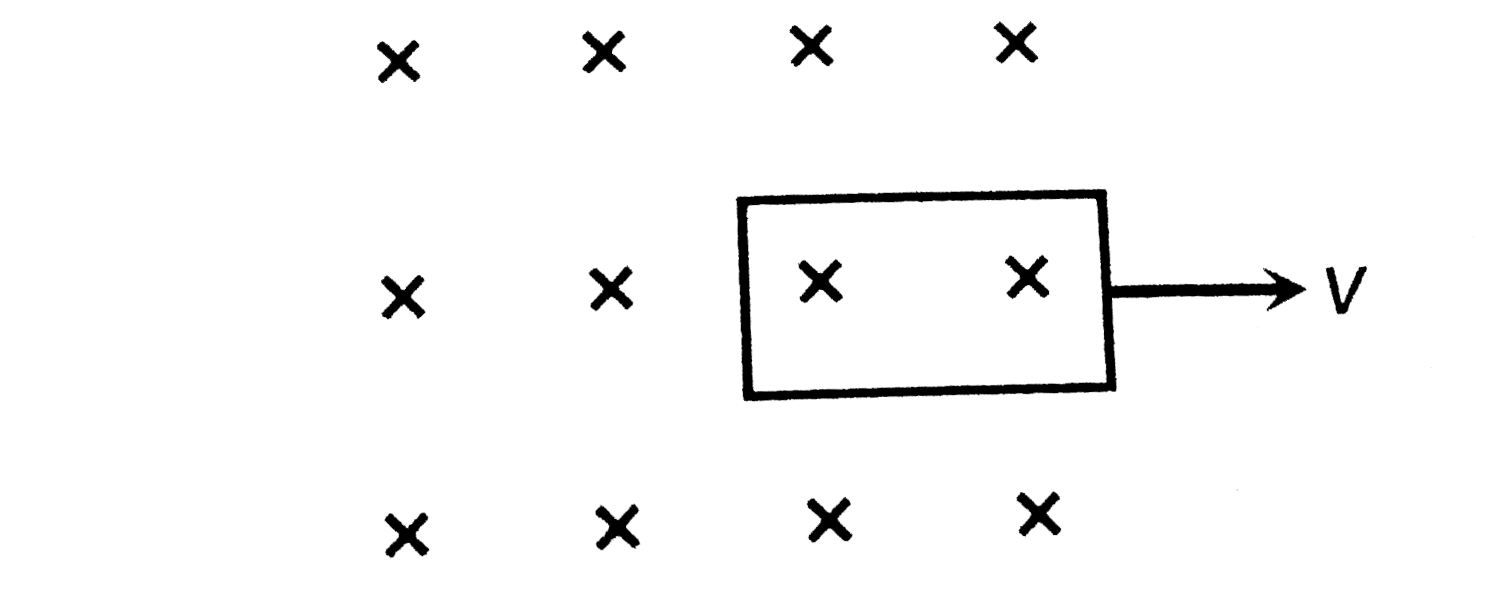
View SolutionFigure show a square loop of side 0.5m and resistance 10Ω. The magnetic field has a magnitude B=1.0T. The work done in pulling the loop out of the field slowly and uniformly in 2.0s is

View SolutionThe circuit in fig. consists of wires at the top and bottom and identical metal springs at the left and right sides.The wire at the bottom has a mass of 10.0g and is 5.00cm long. The wire is hanging as shown in the figure. The springes stretch 0.500 cm under the weight of the wire, and the circuit has a total resistance of 12.0Ω. When a magnetic field is turned on the springes stretch an additional 0.300 cm.
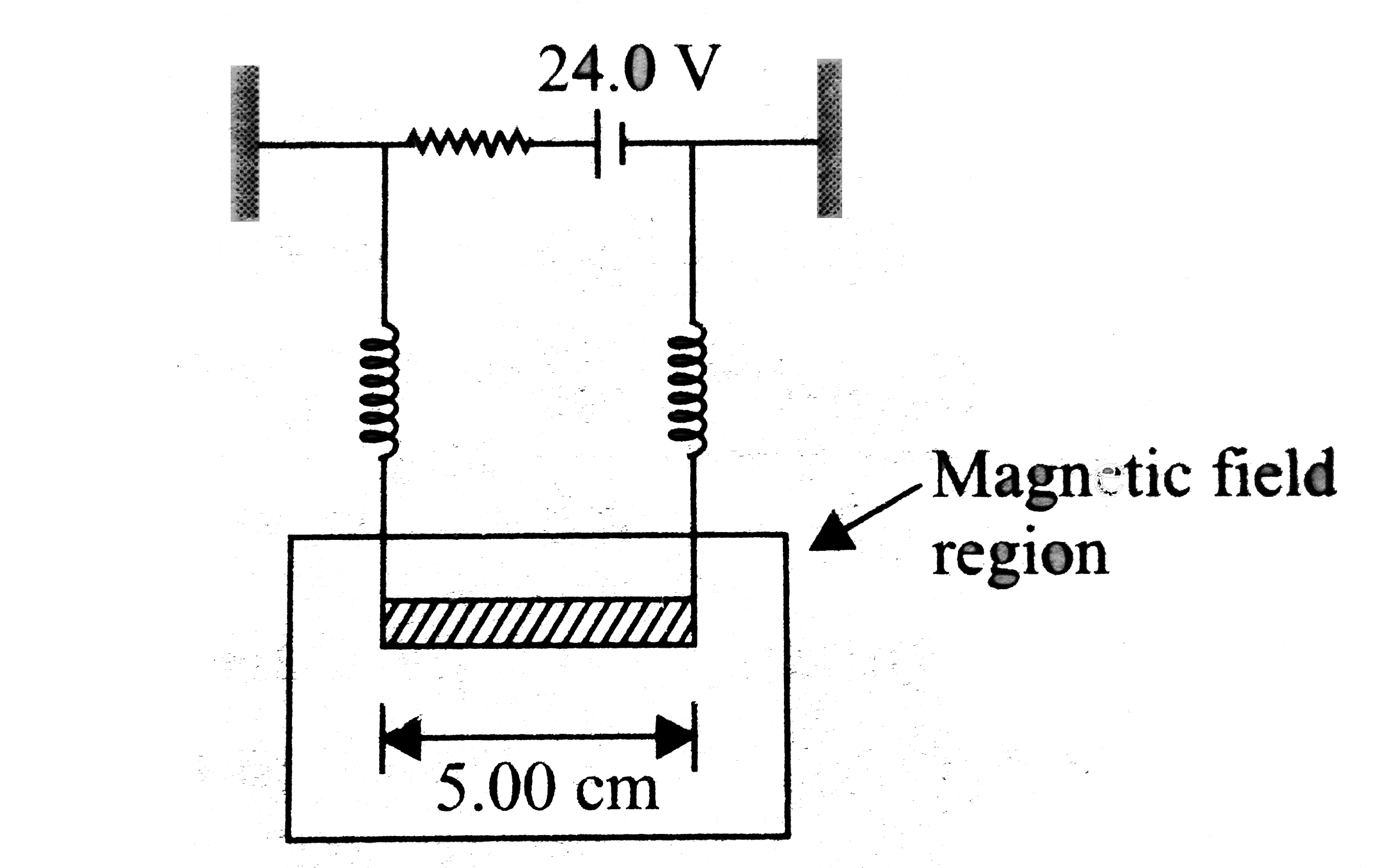
From the above statements we can conclude that
View SolutionThe circuit in fig. consists of wires at the top and bottom and identical metal springs at the left and right sides.The wire at the bottom has a mass of 10.0g and is 5.00cm long. The wire is hanging as shown in the figure. The springes stretch 0.500 cm under the weight of the wire, and the circuit has a total resistance of 12.0Ω. When a magnetic field is turned on the springes stretch an additional 0.300 cm.
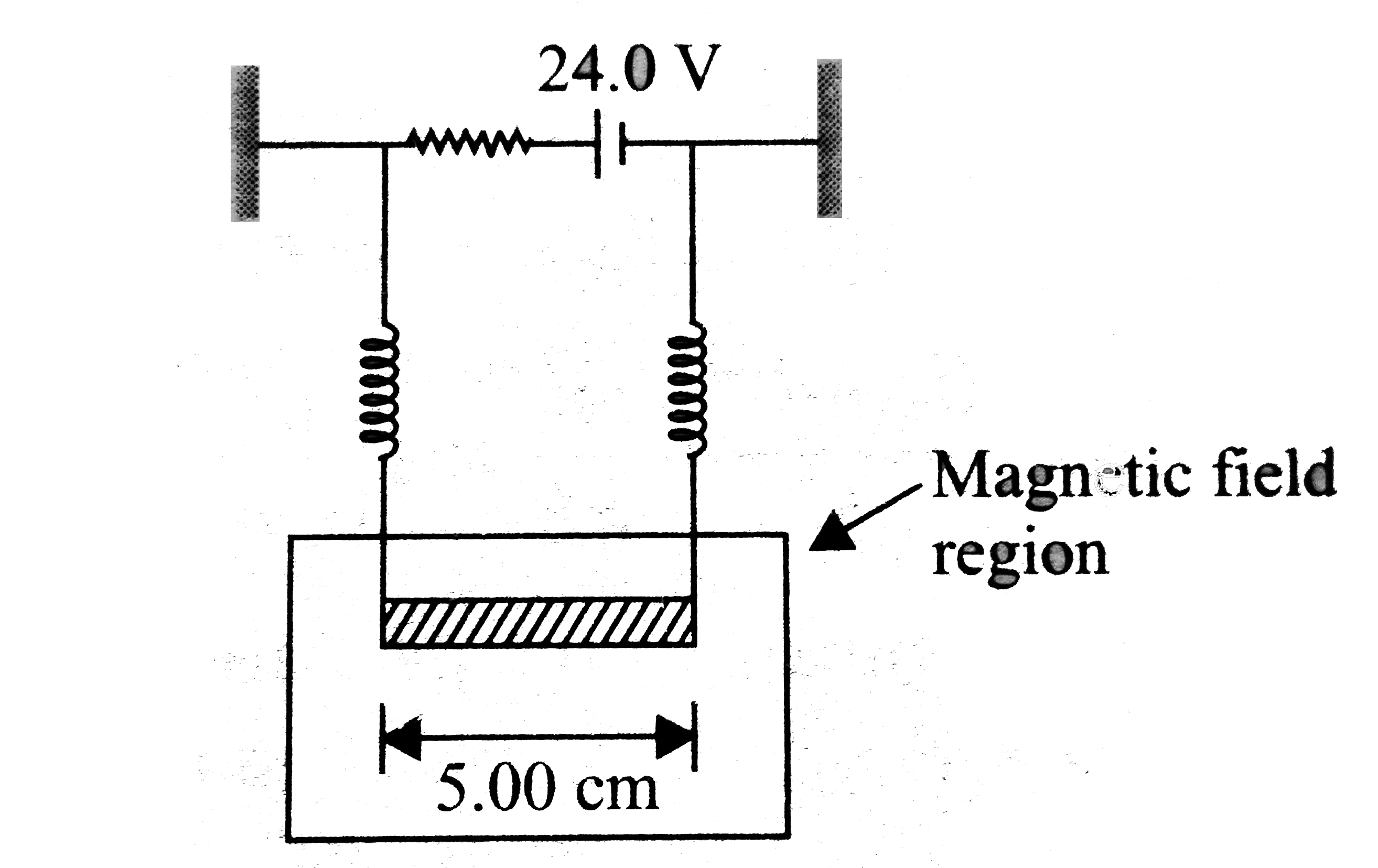
The magnitude of magnetic field is
View SolutionA uniform magnetic field B exist in a direction perpedicuar to the plane of a square loop made of a metal wire. The wire has diameter of 4 mm and a total length of 30 cm . The magnetic field changes with time at a steady rate dB/dt = 0.032 Ts−1 . The induced current in the loop is close to (Resistivity of the metal wire is 1.23×10−8Ωm)
View Solution
